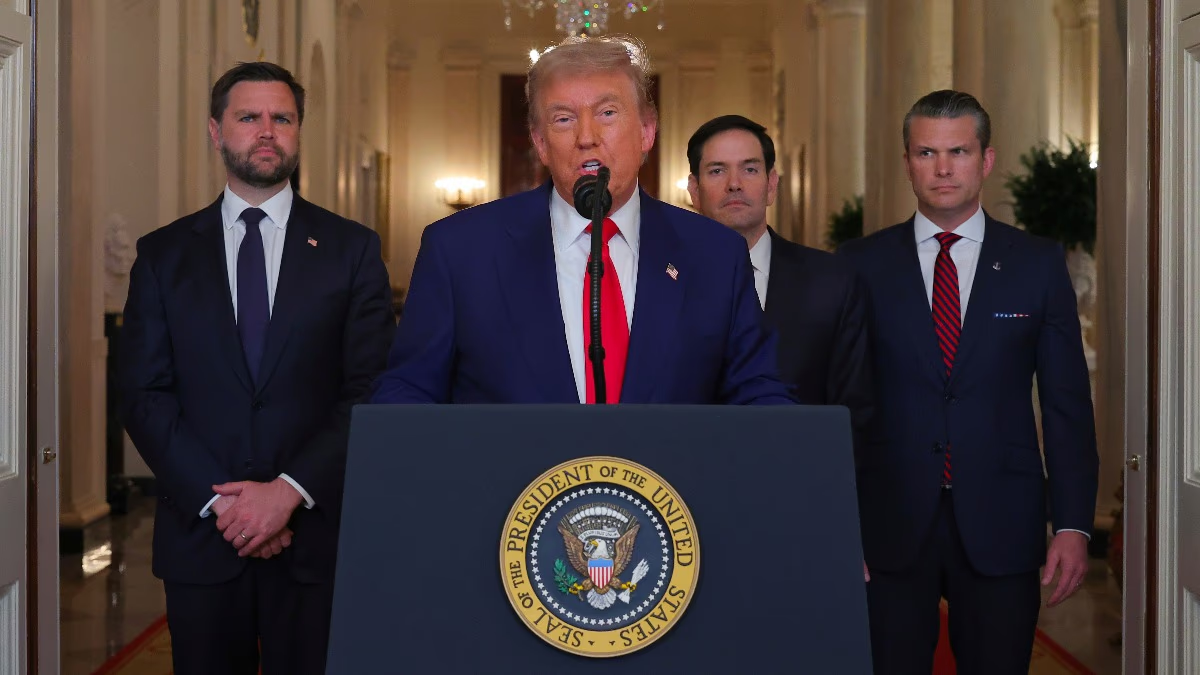President Donald Trump has announced the obliteration of Iran's significant nuclear sites through military assaults. The US airstrikes targeted Iran's underground nuclear facility at Fordo. On June 13, Israel initiated attacks on Iran, and now the US has entered the scene. Despite these developments, Trump hopes that Iran will not retaliate and appeals for peace in the Middle East.
According to a Reuters report, experts indicate that there is limited risk of radiation leakage from military strikes on Iran's uranium enrichment plant. The International Atomic Energy Agency (IAEA) reported on Sunday that there is no uptick in radiation levels outside the sites following US attacks.
Strike on Three Nuclear Sites
The US military has struck sites at Fordo, Natanz, and Isfahan. Trump declared that Iran’s primary nuclear enrichment facilities have been completely dismantled. These attacks follow earlier announced Israeli strikes on nuclear facilities in Natanz, Isfahan, Arak, and Tehran.
Israel claims its actions are directed at preventing Iran from developing nuclear bombs, while the US states it won't allow Tehran to acquire such weapons. Iran has persistently denied any intention of creating nuclear weapons. The IAEA has reported damage to several uranium enrichment and production facilities in Natanz, Isfahan, Karaj, and Tehran.
Israel executed strikes on Arak (Khondab), damaging the Khondab heavy water research reactor under construction. The IAEA confirmed no radiological consequences as the site was not active and lacked nuclear material. Heavy water reactors can be utilized to produce plutonium, similar to enriched uranium in nuclear bomb creation.
Potential Risks of These Attacks
Before the US strikes, experts told Reuters that Israeli attacks had posed limited radiation leakage risks. Darya Dolzikova from the London think tank RUSI mentioned attacks on the nuclear fuel cycle's front end—the stage where uranium is prepared for reactors—primarily resulted in chemical risks, not radiological.
Concerns Over Uranium Hexafluoride
Dolzikova explained that when uranium hexafluoride (UF6) contacts ambient moisture, it forms harmful chemicals. Under low wind, significant material could accumulate nearby, whereas high winds might disperse the nuclear material further. The risk of chemical dispersion is reduced with underground facilities.
James Acton, co-director at Carnegie Endowment for International Peace, argued that before entering a reactor, uranium is barely radioactive and called UF6 chemically toxic, not significantly radioactive. He criticized Israeli operations, arguing enrichment facility attacks are unlikely to yield significant external consequences.
Main concerns arise from an attack on Iran’s Bushehr nuclear reactor by the Gulf. Israeli military reports initially indicated such an attack, raising havoc over potential Gulf calamities before retracting the statement. Israel intends to avoid any nuclear disasters.
Richard Wakeford, professor of epidemiology at Manchester University, suggested attacks on enrichment facilities primarily result in chemical issues affecting surrounding areas. However, damage to larger power reactors tells a different story, with radioactive substances possibly released via volatiles or into seas. Acton expressed Bushehr's potential for radiological disasters.
Why Gulf States Are Uneasy
For Gulf countries, any attack on Bushehr could worsen due to potential Gulf water pollution, endangering critical drinking water resources. A knowledgeable source revealed the Gulf Cooperation Council (GCC) is on high alert monitoring any leakage post-attacks.
So far, no radiological leaks have been detected. GCC has emergency plans ready should Gulf water and food security risks arise. Officials noted over 80% of the UAE’s potable water comes from desalination, with Bahrain entirely dependent on it since 2016, reserving 100% groundwater for emergencies.
In Saudi Arabia, possessing vast natural groundwater reserves, drinking water will account for roughly 50% of water supply by 2023. While some Gulf states like Saudi Arabia, Oman, and UAE have access to multiple seas, Qatar, Bahrain, and Kuwait rely solely on Gulf coasts with no other shorelines.




